WMG News
SafeJawz says ‘Fangs’ for the help at Halloween to WMG at the University of Warwick
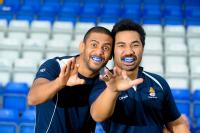 West Midlands sportswear company SafeJawz have said thanks, or rather Fangs, for the help that WMG researchers at the University of Warwick have given them in the development of their new range of self-fit mouth guards which are designed to make gum shields a desirable piece of sports equipment as opposed to a nuisance item that can hinder performance.
West Midlands sportswear company SafeJawz have said thanks, or rather Fangs, for the help that WMG researchers at the University of Warwick have given them in the development of their new range of self-fit mouth guards which are designed to make gum shields a desirable piece of sports equipment as opposed to a nuisance item that can hinder performance.
As it’s Halloween there was really only one obvious design to go with to mark this successful collaboration which is why Nile Dacres and Waitu Setu from Coventry RFC rugby team are sporting Fang-tastic new mouth guards.
Entrepreneurs George Dyer and Ewan Jones founded the sportswear brand, SafeJawz and their business, Protective Sportswear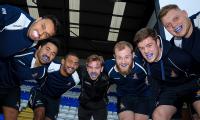 Ltd in Aldridge near Walsall specialises in custom and self-fit stylish mouth guards that athletes of all levels would want to wear, as opposed to having to wear. Hoping to revolutionise the sector through innovation and twinned with a background in sports dentistry, the company had a distinct advantage in being able to develop a brand new, custom range of striking mouthguards whilst still meeting all the mandatory requirements. However they needed to develop their manufacturing skills and technical knowledge to help take their product ideas from concept to manufacture.
Ltd in Aldridge near Walsall specialises in custom and self-fit stylish mouth guards that athletes of all levels would want to wear, as opposed to having to wear. Hoping to revolutionise the sector through innovation and twinned with a background in sports dentistry, the company had a distinct advantage in being able to develop a brand new, custom range of striking mouthguards whilst still meeting all the mandatory requirements. However they needed to develop their manufacturing skills and technical knowledge to help take their product ideas from concept to manufacture.
The Future of Living Spaces – free invitation to sixth form students
We’ve joined forces with our friends at Warwick Engineering Society to offer free places to sixth form pupils at the ‘Colony: The Future of Living Spaces’ conference, on Wednesday 8th November.
The conference, run by students from Warwick’s School of Engineering, is specifically aimed at sixth form pupils who are interested in pursuing a career in engineering or science.
The event will share interesting ideas and projects that scientists are currently working on taking you on an exhilarating journey starting underground, towards the surface, and beyond the clouds!
Oldest known marine navigation tool revealed with scanning technology
Details of the oldest known marine navigation tool, discovered in a shipwreck, have been revealed thanks to state-of-the-art scanning technology at WMG, University of Warwick.
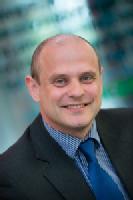 Professor Mark Williams was tasked with scanning the artefact – an astrolabe from the late fifteenth century, used by mariners to measure the altitude of the sun during voyages – which was excavated in 2014 by Blue Water Recovery.
Professor Mark Williams was tasked with scanning the artefact – an astrolabe from the late fifteenth century, used by mariners to measure the altitude of the sun during voyages – which was excavated in 2014 by Blue Water Recovery.
When the team found the object, no markings were visible – they believed it was an astrolabe, but they could not see any navigational 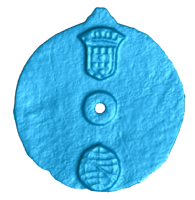 markings on it.
markings on it.
They then approached Professor Williams, who conducts pioneering scanning analyses in his laboratory at WMG, to reveal the artefact’s invisible details.
The scans showed etches around the edge of the object, each separated by five degrees – proving that it is an astrolabe.
These markings would have allowed mariners to measure the height of the sun above the horizon at noon to determine their location so they could find their way on the high seas.
WMG gives free access to tool for companies preparing for Industry 4 – enabling the next generation of manufacturing
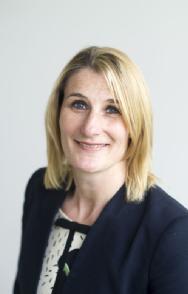 WMG researchers, at the University of Warwick, have worked in conjunction with Crimson & Co and Pinsent Masons, to produce a free to access “Industry 4” readiness assessment tool. It is designed to provide a simple and intuitive way for companies to start to assess their readiness and future ambition to harness the potential of the new cyber-physical age
WMG researchers, at the University of Warwick, have worked in conjunction with Crimson & Co and Pinsent Masons, to produce a free to access “Industry 4” readiness assessment tool. It is designed to provide a simple and intuitive way for companies to start to assess their readiness and future ambition to harness the potential of the new cyber-physical age
The term Industry 4 originates from the high-tech strategy of the German government, which soughtto re-define the role of manufacturing post the global economic crisis. It suggests that we are on thecusp of the 4th Industrial Revolution, a cyber physical age, which will be realised over the next 20years.
WMG experts line-up for Emerging Technology Conference
Our team of experts will be out in force at the New Statesmen Emerging Technology Conference on 20th November at the Institute of Engineering and Technology (IET) in London.
The Conference programme is split into two streams, one tackling intelligence, software and machine learning, and the other infrastructure, advanced materials and robotics. The event brings together engineers, data analysts, IT and technology specialists, and senior management professionals, from across a variety of sectors, to discuss and debate technologies of the future.
Midlands roads to be UK autonomous vehicle testbed
 Roads in Coventry and Birmingham are set to become a world-class UK testbed for developing the next generation connected and autonomous (CAV) vehicles, thanks to a new £25m programme of investment being led by WMG at the University of Warwick.
Roads in Coventry and Birmingham are set to become a world-class UK testbed for developing the next generation connected and autonomous (CAV) vehicles, thanks to a new £25m programme of investment being led by WMG at the University of Warwick.
The pioneering venture, undertaken by a consortium of research and industry partners, will make UK roads ready for CAVs by developing wireless networks, analysing how vehicles behave in real urban environments and involving the public in their evaluations.
The UK Central CAV Testbed will be based on 80 kilometres of urban roads in Coventry and Birmingham, creating a world-leading connected infrastructure and eco-system, and positioning the Midlands as a centre for cutting-edge automotive and communication technologies.
Thinking Higher
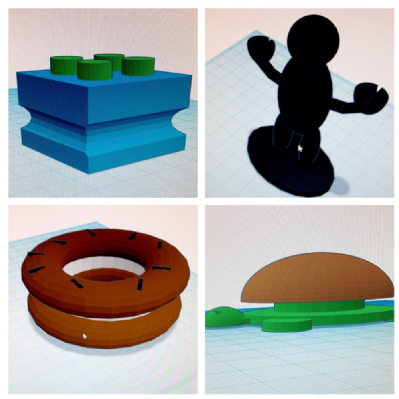 In July, we welcomed a group of 12 and 13 year old pupils from Hartshill School in Nuneaton, as part of the Think Higher (Coventry and Warwickshire) programme.
In July, we welcomed a group of 12 and 13 year old pupils from Hartshill School in Nuneaton, as part of the Think Higher (Coventry and Warwickshire) programme.
The children took part in a Computer Aided Design (CAD) and 3D Printing workshop, with the aim being to inspire pupils in engineering. They were shown how to use a simple CAD software package and complete a task to create their own design for an ‘ear buddy’ to store a set of headphones.
The CAD and 3D printing offered the pupils the opportunity to quickly and easily get involved in designing and making, thus building their interest and confidence. The task to design the ‘ear buddy’ was a creative task but also used planning and organisation skills to consider whether the design would actually work. The pupils sketched design ideas then took measurements of the headphones enabling them to add key dimensions to the design before using the CAD software.
Before returning to school the students were given a tour of our Engineering Hall, with Dave Cooper and Zach Parkinson from our technical team, giving them an insight into the wider world of engineering.
The event was organised in collaboration with the Think Higher organisation. The workshop was run by Diane Burton along with Maretva Baricot-Mendoza and Warwick Engineering undergraduate Becky Crabbe.
Milestone hit in the construction of the National Automotive Innovation Centre
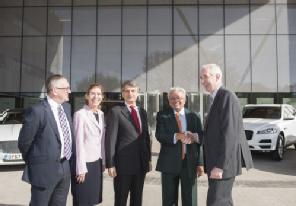
The National Automotive Innovation Centre, at the University of Warwick, saw a construction milestone hit, today, with the completion of the external grounds. WMG’s Professor Lord Bhattacharyya, Jaguar Land Rover’s Professor Dr Ralf Speth and TMETC’s John O’Connor, along with Leo Quinn, Balfour Beatty Group Chief Executive, and Rosie Drinkwater, University of Warwick marked the milestone with a specially engraved stone.
The Centre, which will open in Summer 2018, will become the driving force behind the future of the UK’s automotive sector. It will be the largest automotive R&D facility in Europe and is a long term commitment between Jaguar Land Rover, Tata Motors European Technical Centre, and WMG.
Students zoom in to win Fastest Car Award in World Finals
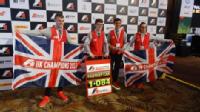 Four Coventry teenagers are celebrating after the car they designed was named the fastest in a worldwide competition.
Four Coventry teenagers are celebrating after the car they designed was named the fastest in a worldwide competition.
Abi Hirons, Callum Kennedy, Eddie Hodierne and Elias Khimasia – known collectively as Academy Racing - returned to a winners’ welcome following their success at the F1 in Schools World Championships in Malaysia this week.
The team, all students at WMG Academy in Mitchell Avenue, Coventry, had spent a year designing, building, testing and racing their miniature Formula One car, Titan 22.
Some 26,000 schools took part in the F1 in Schools competition, which challenged students to create a CO2 powered car to travel 20 metres as fast as possible. Titan 22 reached the finish line in just 1.084 seconds.
Team member Eddie Hodierne, 17, said: “It was an amazing feeling to know we had designed the fastest car award in the world finals.
“It was an immense amount of pressure to put something so successful together but we worked hard and I am very proud of the team.
“It was overwhelming to see everyone in the school come turn out to welcome us on our return.”
Universities' global connectivity via the air transport network gives significant insight to global rankings
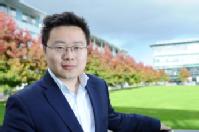 The demand for higher education is on the rise and so is the cost of education. When judging the quality of a university, ranking tables provide good indication of university quality. But when many universities fluctuate in those rankings from year to year, if you a prospective student or researcher, how should you choose the right university? Some base their decisions on employability figures, others consider factors like presence of inspirational academics, academic infrastructure, and diversity, but new research shows that universities in close proximity to large transportation hubs are set to succeed.
The demand for higher education is on the rise and so is the cost of education. When judging the quality of a university, ranking tables provide good indication of university quality. But when many universities fluctuate in those rankings from year to year, if you a prospective student or researcher, how should you choose the right university? Some base their decisions on employability figures, others consider factors like presence of inspirational academics, academic infrastructure, and diversity, but new research shows that universities in close proximity to large transportation hubs are set to succeed.
These are the important new findings from an interdisciplinary team of researchers from University of Warwick, and the Alan Turing Institute, Mr Marco Del Vecchio and Professor Ganna Pogrebna have recently appeared in a new article published in the Royal Society Open Science.
Dr Guo, Mr Del Vecchio and Professor Pogrebna look at the relation between universities’ performance (measured by the ARWU university ranking) and their global connectivity via the air transport network by analysing the data on all global airports and flights over a period from 2005 to 2016. They show that universities well-connected to global transportation hubs tend to grow in rankings faster than those of a similar ranking positioned in less connected parts. Interestingly, the key metric is proximity to airport hubs that have more direct flights to other hubs than the number of flights or the number of connections alone. For each university in the ranking, researchers calculate the university’s global connectivity coefficient and find that this coefficient helps to explain differences in the ranking.
